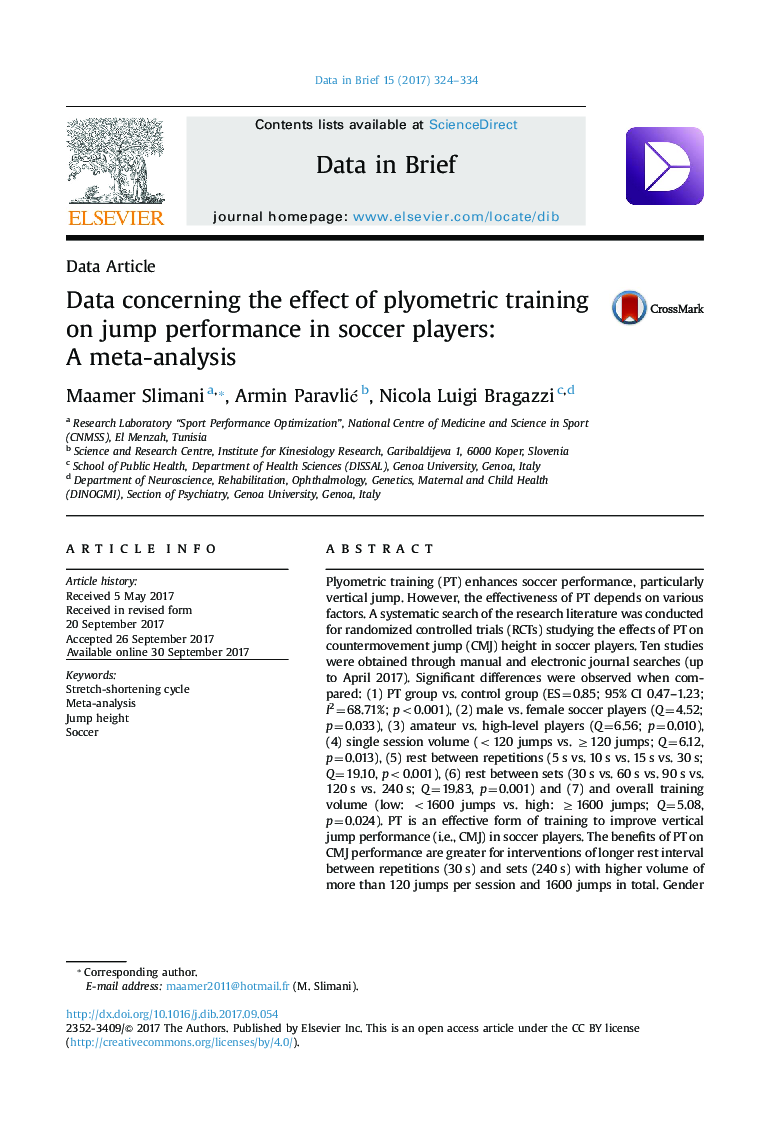| Article ID | Journal | Published Year | Pages | File Type |
|---|---|---|---|---|
| 4764874 | Data in Brief | 2017 | 11 Pages |
Plyometric training (PT) enhances soccer performance, particularly vertical jump. However, the effectiveness of PT depends on various factors. A systematic search of the research literature was conducted for randomized controlled trials (RCTs) studying the effects of PT on countermovement jump (CMJ) height in soccer players. Ten studies were obtained through manual and electronic journal searches (up to April 2017). Significant differences were observed when compared: (1) PT group vs. control group (ES=0.85; 95% CI 0.47-1.23; I2=68.71%; p<0.001), (2) male vs. female soccer players (Q=4.52; p=0.033), (3) amateur vs. high-level players (Q=6.56; p=0.010), (4) single session volume (<120 jumps vs. â¥120 jumps; Q=6.12, p=0.013), (5) rest between repetitions (5 s vs. 10 s vs. 15 s vs. 30 s; Q=19.10, p<0.001), (6) rest between sets (30 s vs. 60 s vs. 90 s vs. 120 s vs. 240 s; Q=19.83, p=0.001) and (7) and overall training volume (low: <1600 jumps vs. high: â¥1600 jumps; Q=5.08, p=0.024). PT is an effective form of training to improve vertical jump performance (i.e., CMJ) in soccer players. The benefits of PT on CMJ performance are greater for interventions of longer rest interval between repetitions (30 s) and sets (240 s) with higher volume of more than 120 jumps per session and 1600 jumps in total. Gender and competitive level differences should be considered when planning PT programs in soccer players.
